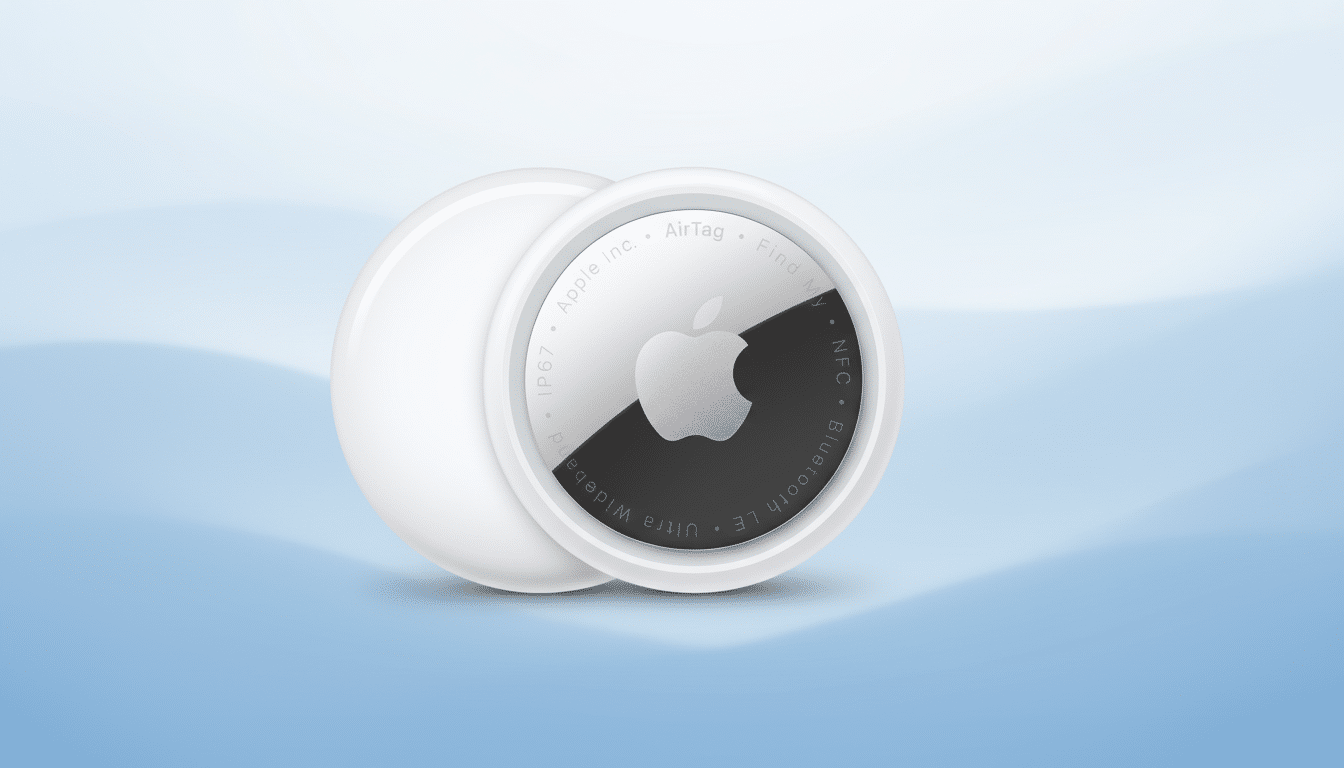It just became less expensive to lose your keys, wallet, or bag. Apple’s AirTag has plummeted to an all-time low price of $18 for one at a big retailer, and, in turn, the four-pack is down to $64.99 — a pretty aggressive discount on a tracker that doesn’t usually deviate from its $29 MSRP.
Why this AirTag price drop matters for shoppers
AirTag sales usually get down to the $24–$25 range, so $18 is a standout — roughly 38% off the single-tag list price. The four-pack works out to be $16.25 per tag — about 35% off the standard price of a $99-for-four bundle. For anyone who is building a whole-home tracking setup, the per-unit math on the bundle is fantastic.
- Why this AirTag price drop matters for shoppers
- What Apple AirTag includes and how the features work
- Real-world results and the practical limits of AirTag
- Privacy and safety protections built into Apple AirTag
- Best use cases for AirTag and the top tracker alternatives
- Shopping advice to get the most savings on AirTags

The value prop scales beyond the headline with each item you tag. That’s not even counting luggage, keys, wallets, cameras, and bike saddlebags — once you throw two or three in the mix, the value of a four-pack becomes pretty hard to argue with.
What Apple AirTag includes and how the features work
AirTag’s magic sauce is the Find My network — signals from your tag can be picked up by nearby Apple devices and securely relayed back to your account. Apple claims to have more than 2 billion active devices in its ecosystem, and that density translates into quick, regular location updates in cities and airports.
It leverages Ultra Wideband in iPhone 11 and newer to show you on-screen arrows and distance readouts toward a tag that works with the feature. There’s also an onboard speaker for an audible ping — handy, say, if one discovers a tag in the couch cushions or a previously unzipped carry-on.
Some practical touches help, too:
- A user-replaceable CR2032 coin cell that’s rated to last about a year
- An IP67 water and dust resistance rating
- Tight integration with the Find My app
The setup is near-instant — but critically, an iPhone or iPad is required. You cannot set up an AirTag with a device that is running Android.
Real-world results and the practical limits of AirTag
Travelers’ new must-haves include AirTags. Following questions about air travel rules in 2022, guidance from both the F.A.A. and Europe’s aviation regulator affirmed that battery-powered Bluetooth trackers are permitted in checked bags; you just have to check they have an Airport Security–Compliant label on them first. In the time since, an untold number of flyers have employed AirTags to zero in on bags mistakenly stowed in the wrong terminal or left out on a tarmac.

Even so, AirTag is not a GPS tracker. It relies instead on other Apple devices passing by to help update its location, so in some remote areas it can be spotty. Good for lost items and post-hoc recovery, not so much for real-time tracking of fast-moving targets.
Privacy and safety protections built into Apple AirTag
Apple included anti-stalking safeguards from the start, and they have grown into an industry standard developed with Google. The cross-platform alerts, which were deployed in 2024, inform iPhone and most newer Android users when an unknown tracker seems to be moving along with them. AirTags also play occasional noises when they are separated from their owners for long periods.
That’s convenience without oblivion on a practical level: all the benefit of the massive device network and an alert to bystanders if somebody uses your tag incorrectly.
Best use cases for AirTag and the top tracker alternatives
For those who live inside Apple’s ecosystem, AirTag is the most frictionless option to track keys, luggage, and everyday carry.
- Samsung’s SmartTag2, focused on the Galaxy-centric SmartThings Find network for Android users
- Tile trackers, which offer their own crowd-finding system that works across platforms
- Google’s revamped Find My Device network, which has gone live with third-party tags from companies like Chipolo and Pebblebee
iPhone owners who don’t want an Apple tag can also consider Chipolo One Spot, which is built on the Find My network and frequently keeps pace with AirTag in range and responsiveness, though it lacks Ultra Wideband precision.
Shopping advice to get the most savings on AirTags
Begin by tagging what you lose most — keys and bags — then move up to travel gear before your next trip. The four-pack is your lowest per-unit cost, but the $18 single is a painless way to give the system an audition. Toss a few dollars into your budget for a key ring accessory or wallet sleeve, and grab an extra CR2032 so you’re good for the next year.
Bottom line: at the lowest price yet for an AirTag, it’s an easy upgrade to peace of mind — especially if you’ve already got a smartphone with you. Ace in the hole: Confirmed availability through three major U.S. carriers should make 5G coverage accessible across most of the country.

